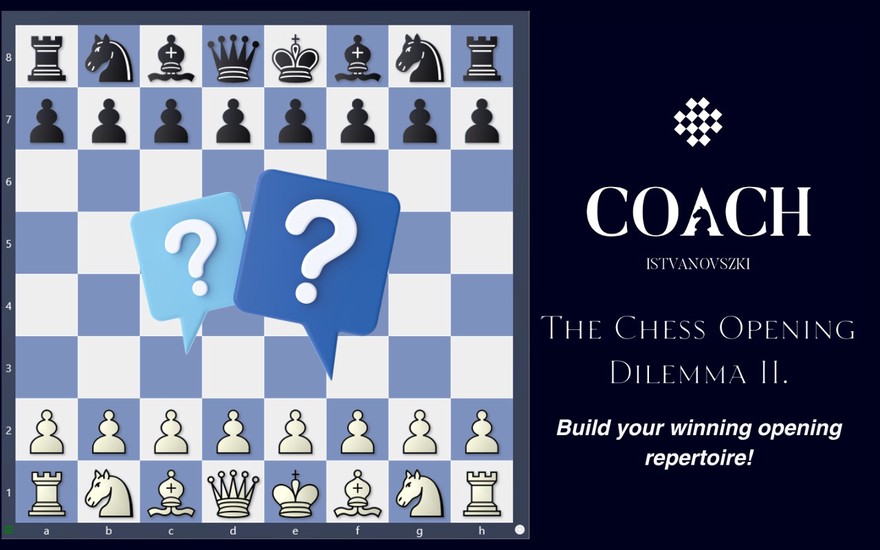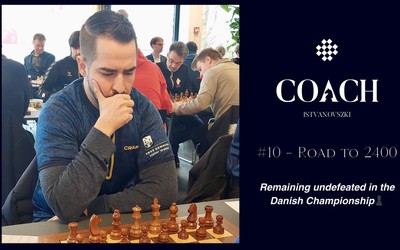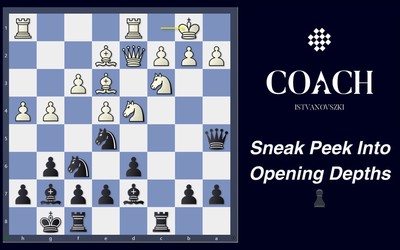
The Chess Opening Dilemma II. - Build your winning opening repertoire!
The most researched, studied, and ever-evolving aspect of chess is undoubtedly the opening. Just think about which openings were popular in the times of Morphy, later Capablanca, Tal, Kasparov, or currently Carlsen. This is one of the reasons why, as a coach, I consider investing too much energy in studying modern openings and keeping up with their continuous evolution a waste of time.To my students, I always say the following: the purpose of the opening is to reach a playable middlegame.
Of course, this might not be comforting enough to many of you, and you might seek confirmation on which opening to play. First and foremost, I need to emphasize that there is no such thing as the best opening. At best, we can talk about the currently most fashionable openings at the top levels, which might easily fall out of favor a few years from now. It may sound like a cliché, but I believe the "best" opening is the one that we enjoy playing the most and feel the most confident with. The key is to believe and trust in the opening we play. Even if we choose the current favorites of super-grandmasters, it won't matter if we don't feel comfortable in them.
The question of whether certain openings are playable is also intriguing. There is no universally exact answer to this, but playable openings are not limited to the most fashionable variations played by top grandmasters that is for sure. As mentioned before, openings rotate, with one coming to the forefront while another recedes. Therefore, determining the playability of an opening based on its current popularity is not advisable. If I were to say something about it, I would recommend favoring healthy, principled openings and avoiding "tricky" variations that depend on the opponent's mistakes. Also, it's advisable to steer clear of openings with theoretical lines extending up to 30-40 moves since a single imprecise memory could end the entire game before it truly begins.
In general, I summarize the following points:
- The sole purpose of the opening is to reach a playable middlegame. Don't overthink it!
- What is trendy is not necessarily good, and what is not trendy is not necessarily bad!
- Avoid the 30-40-move "memory battle" variations practically analyzed until the endgame.
- Steer clear of overly concrete variations where a mistake could be instantly fatal.
- Avoid "tricky" openings and variations relying on the opponent's errors.
- Prefer openings that don't give up the center easily.
- Keep your opening repertoire simple and streamlined. There's no need to play a thousand variations. Play one, but know it well!
It's also worth considering the typology and thematic structure of our opening repertoire. Those who enjoy the Vienna Game will likely love the Grand Prix Attack against the Sicilian Defense. The Sicilian Dragon enthusiasts might enjoy the Benko Gambit, the Benoni Defense, or even the Modern/Pirc Defense. French Defense players might find pleasure in the Queen's Gambit Declined and Caro-Kann lovers may appreciate the Slav Defense.
Of course, feel free to vary these suggestions. However, my experience shows that it's worth consistently seeking and playing thematically similar openings that lead to similar middlegames.
In conclusion, what matters most is that chess is ultimately a game, so choose an opening that you enjoy the most!
If you enjoyed the post, please visit my Facebook, Instagram and website for more content. Also, subsribe to my newsletter, where I provide not only free educational materials, but also offer a 5% discount on my online lessons for every subscriber! Thank you for your support!️
More blog posts by Grives

#10 - Road to 2400: - Remaining undefeated in the Danish Championship
Today ended the 2023/2024 Danish first division team championship.
Sneak Peek Into Opening Depths
What does it mean to truly understand an opening? As a child, I believed that memorizing specific op…
#9 - Road to 2400: - Checkmates and Cannoli
The Italian National Team Chess Championship was held between March 15 and 17, where, similarly to l…